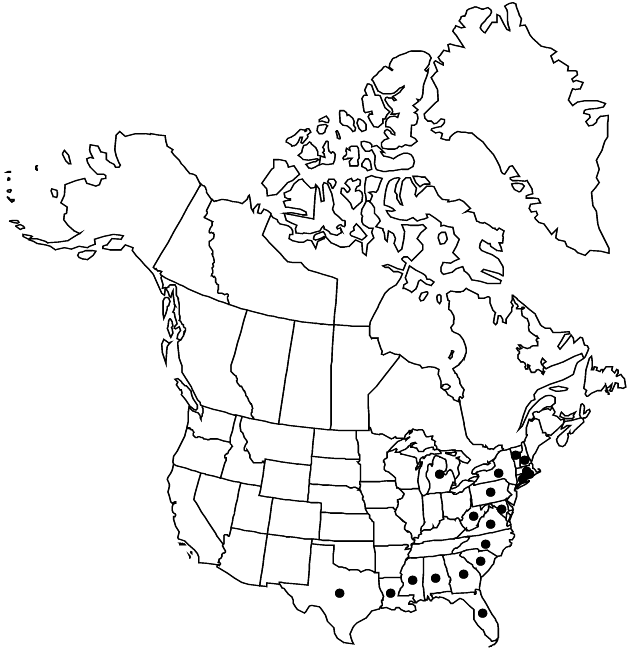Helianthus debilis
Trans. Amer. Philos. Soc., n. s. 7: 367. 1841.
Annuals or perennials, 30–200 cm (taprooted). Stems decumbent to erect, glabrous, hirsute, or puberulent. Leaves mostly cauline; mostly alternate; petioles 1–7 cm; blades deltate-ovate, lanceovate, or ovate, 2.5–14 × 1.8–13 cm, bases cordate to truncate or broadly cuneate, margins subentire to serrate, abaxial faces glabrate to hispid, not glanddotted. Heads 1–3. Peduncles 9–50 cm. Involucres hemispheric, 10–22 mm diam. Phyllaries 20–30, lanceolate, 8–17 × 1–3 mm, apices acute to long-attenuate, abaxial faces glabrous or ± hispid, not glanddotted. Paleae 7.5–8 mm, apices 3-toothed (middle teeth acuminate, usually glabrous or hispid, sometimes ± villous or bearded). Ray-florets 11–20; laminae 12–23 mm. Disc-florets 30+; corollas 4.5–5 mm, lobes usually reddish, sometimes yellow; anthers dark, appendages dark (style-branches usually reddish, rarely yellow). Cypselae 2.5–3.2 mm, glabrous or sparsely hairy; pappi of 2 lanceolate or lance-linear scales 1.2–2.5 mm.
Distribution

Ala., Conn., Fla., Ga., La., Mass., Md., Mich., Miss., N.C., N.H., N.Y., Pa., R.I., S.C., Tex., Va., Vt., W.Va.
Discussion
Subspecies 5 (5 in the flora).
C. B. Heiser (1956) placed 8 subspecies in Helianthus debilis; he noted that alternative taxonomic treatments might recognize these in as many as three species, or expand the single species to include H. petiolaris. Later, Heiser et al. (1969) separated three of the subspecies as H. praecox. Isozyme data (R. P. Wain 1982, 1983; L. H. Rieseberg and M. F. Doyle 1989) show that all are closely related. Documented hybridization with H. annuus further complicates the situation. The treatment by Heiser et al. is followed here.
Helianthus debilis is adventive beyond the Atlantic and Gulf coasts of the United States.
Selected References
None.
Lower Taxa
Key
| 1 | Stems decumbent; peduncles 9–20(–22) cm | > 2 |
| 1 | Stems erect; peduncles (15–)20–50 cm | > 3 |
| 2 | Stems glabrous or puberulent; leaf blades serrulate or shallowly, regularly serrate, abaxial faces sparsely, if at all, gland-dotted | Helianthus debilis subsp. debilis |
| 2 | Stems hirsute; leaf blades deeply, irregularly serrate, abaxial faces densely gland-dotted | Helianthus debilis subsp. vestitus |
| 3 | Leaves 8–14 cm; peduncles (relatively slender) 20–40 cm; discs 10–15(–17) mm diam | Helianthus debilis subsp. silvestris |
| 3 | Leaves 2.5–9 cm; peduncles (not notably slender) 10–50 cm; discs 14–20 mm diam | > 4 |
| 4 | Leaf blades usually deeply, irregularly serrate; peduncles 10–25(–30) cm; ray lami-nae 12–20(–22) mm | Helianthus debilis subsp. tardiflorus |
| 4 | Leaf blades usually shallowly, regularly serrate; peduncles 25–50 cm; ray laminae (15–)20–23 mm | Helianthus debilis subsp. cucumerifolius |